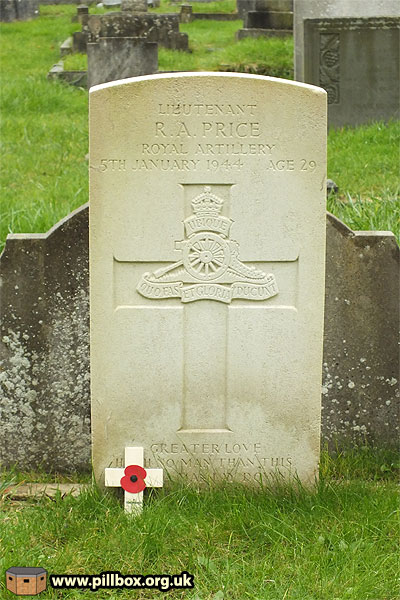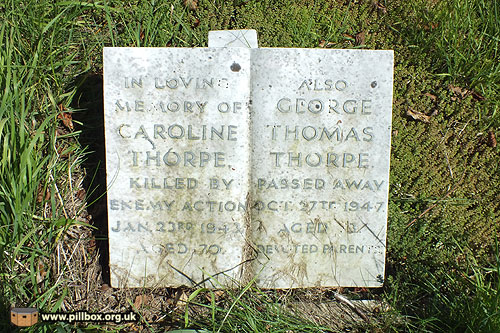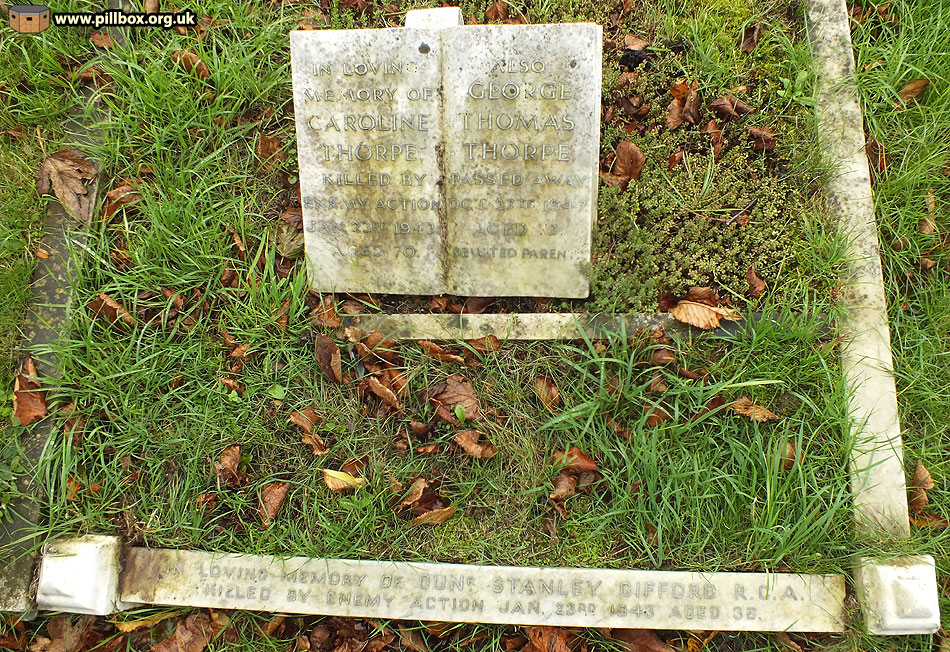In Remembrance
Posted: 11 November 2012 15:02
I've been spending quite a bit of time in two cemeteries in recent months, most notably Ocklynge Cemetery in Eastbourne, but Hove Cemetery has also been subject to scrutiny.
I've selected two soldiers for this year's Remembrance piece, one British and one Canadian, from what I've found about them in the records. As I'm writing this, I've just noticed some curious similarities between them.
Firstly, both men were in the artillery of their respective armies; one in a field regiment, the other an anti-aircraft regiment. Both were killed in January air raids on East Sussex - and both were laid to rest in cemeteries that had suffered bomb damage. I'll describe the damage caused in Hove Cemetery by three bombs in a later post.

Lieutenant Rhys Alfred Price
Lieutenant Price was with 131 Light Anti-Aircraft Regiment stationed in St. Leonards near Hastings. In the early hours of January 5th, 1944, a number of German aircraft were milling around in the Hastings area; Air Raid Warning Red was issued at 01:56.
One enemy aircraft crossed the coast at Hastings at 15 - 20 thousand feet; both the Royal Observer Corps and AA gunners believed it to have been a Focke-Wulf 190, although this was never confirmed beyond doubt.
The raider was then intercepted by a night-fighter over Hastings, causing the pilot to power-dive down to about 10,000 feet and complete his evasive action by dropping a 500kg bomb at 02:30am.
The 40mm Bofors guns of 131 Regiment were not in action at the time - presumably because of the night-fighters operating in the area. The regiment's Gun Operations Room was situated in a requisitioned house and it was opposite this house that the bomb fell.
Lt. Price was manning an observation post on the roof of the building during the raid and was in telephone contact with a Captain Robinson, the Senior Gunnery Officer, who
told his observer to be be prepared for a hostile aircraft coming up from the south in company with a night fighter.He received the reply "Yes - here they come, and the fighter has made contact, I can see the tracers as he is firing."
Then the bomb fell and a fragment from it pierced the heart of the observer who died instantly.
The curious thing is that the War Diary of 131 Regiment makes no mention whatsoever of the incident or the loss of Lt. Price - nothing is recorded as happening on January 5th at all. The extract above comes from Home Office documents and even then they don't actually name Lt. Price; I was only finally able to identify him using Commonwealth War Graves Commission data and locate his headstone in Hove Cemetery. It demonstrates how easily an individual's story of sacrifice can be lost.
However, Lieutenant Price is not forgotten - neither, for that matter, is any fallen serviceman or servicewoman in Hove Cemetery. The photo above shows a Remembrance cross laid on Lt. Price's grave - this had been placed only a matter of minutes before the photo was taken. In a wonderful gesture of remembrance, members of the Hove and Adur Sea Cadets place a cross on each and every Commonwealth War Grave here and it was fantastic to see a younger generation engaged in such a way.
Long may it continue.
Gunner Stanley Gifford
Gunner Gifford is unusual in that, as a Canadian soldier, he is not buried in Brookwood Cemetery in Surrey and he does not have a Commonwealth War Graves Commission headstone. His regimental diary states: "Gnr Gifford of 71st Battery was killed by bombs in Polegate while on leave - private funeral."
More detail of the incident is provided by Home Office files that describe how, on 23rd January 1943, four FW 190s crossed the coast near Eastbourne and raced inland to Polegate, where four bombs were dropped from just 100ft. One failed to explode and was later defused by a bomb disposal squad.

The aircraft then rushed back towards the coast, machine-gunning numerous streets in Eastbourne as they went.
St. Elizabeth's Church (seen at right) was on the receiving end of similar treatment.
I stopped off at the church to see if any evidence was still apparent, and there are some distinct patterns of pitting in the brickwork high up on the walls - I may cover this in a later post.
At some point during the attack a Canadian despatch rider had a lucky escape when a bullet punctured a tyre of his motorcycle.
The police reported that only three aircraft crossed the coast and a Bren gun crew claimed to have accounted for one raider shot down in the sea, although an anti-aircraft unit claimed that they shot down two aircraft into the sea off Beachy Head.

Searching Ocklynge Cemetery using CWGC data and the cemetery plan, I was unable to find Stanley Gifford's grave. This was partly due to some of the original cemetery paths being used for burials in recent years, making it hard to locate some of the plots.
However, official records state that there were three fatalities as a result of the raid on Polegate and I did find the final resting place of 70 year-old Caroline Thorpe, whose headstone (right) records that she was killed by enemy action.
It appears that her house received a direct hit from one of the bombs and I wondered whether Gunner Gifford had some sort of connection with her, as he was spending his leave in Polegate - his unit was based in Oxted, Surrey, at that time.
I then made another visit to Ocklynge Cemetery last week to try and see if I could find Gunner Gifford's grave. This time I was in luck - the groundsmen had been strimming the grass in the relevant plot and I suddenly realised that Gunner Gifford was commemorated on the grave I had previously found! His epitaph is on the frontal fender of the grave and was completely obscured previously.

It would appear that the private nature of his funeral means he did not get the customary military honours and the idea of a family connection is reinforced by a shared grave and in a local cemetery.
At the start of this piece we were looking at two soldiers - we've now brought civilians into the picture and this illustrates the shared experience of soldier and civilian alike on the home front, exposed to the same danger.
An entry in the CWGC database and a memorial in a cemetery tell only a small part of the story. As I've found, it takes small snippets of information from multiple sources to piece together the full sequence of events of those who paid the ultimate price.
As I find again and again, each and every one of these stories is worth telling.
- Pete

Email:
Blog Latest

Bishopstone reveals its pillbox secrets
18 October 2021

Pillbox or Observation Post?
10 June 2020

Uncovering the hidden secrets of a pillbox
8 June 2019

Review of 2018
31 December 2018

Wartime Christmas in East Sussex (2)
24 December 2018
Jargon-buster
War diary
A record of events kept by all units from the point of mobilisation. A diary's contents vary enormously from unit to unit; some give detailed entries by the hour on a daily basis while others merely summarise events on a weekly/monthly basis.
This site is copyright © Peter Hibbs 2006 - 2024. All rights reserved.
Hibbs, Peter In Remembrance (2024) Available at: http://pillbox.org.uk/blog/216711/ Accessed: 27 July 2024
The information on this website is intended solely to describe the ongoing research activity of The Defence of East Sussex Project; it is not comprehensive or properly presented. It is therefore NOT suitable as a basis for producing derivative works or surveys!